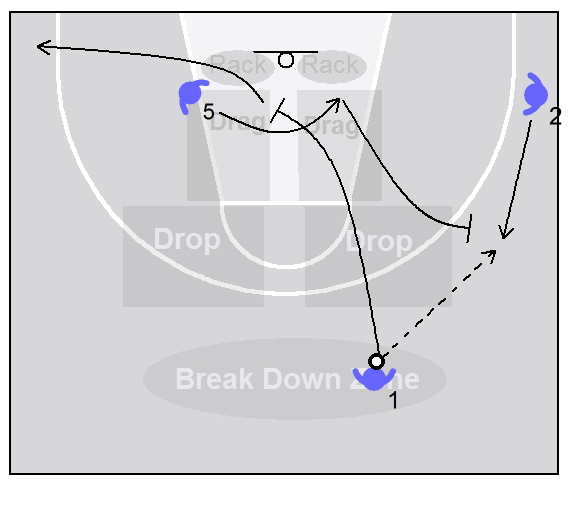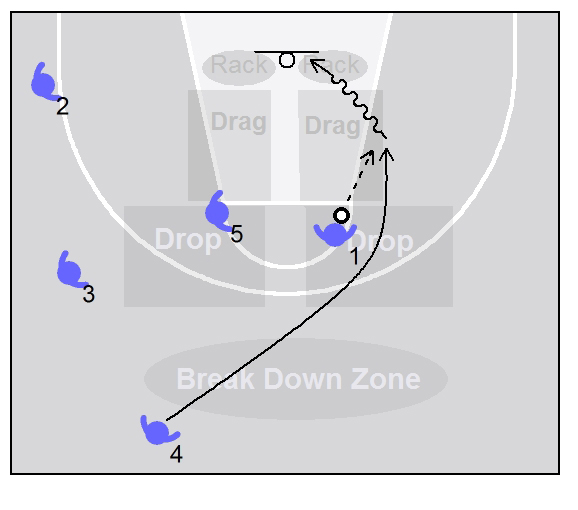This blog is meant to provide some in-season information on implementing the Dribble Drive Motion offense with a team. Specifically the team is a semi-professional team in Europe – and as I hope to give readers some detailed information on how we run the offense, including how we run it, and how we counter what defenses do against it, the exact identity of the team will remain secret.
The dribble drive has received a lot of hype. In the spring of 2008 Sports Illustrated ran an article on the Memphis Dribble Drive motion offence. I read the article and so did my Director of Basketball. We pretty much immediately decided to go with coach Walberg’s offence as the main offence for the entire basketball club, from under 14’s to men, as we felt it provided not just tactical advantages, but also clear advantages when it comes to player development.
We were looking for an offense that would not only get us wins on the court, but also promote long term player development and basketball IQ. We believe we’ve found it in the Dribble Drive Motion, but it hasn’t been easy to get to a point where it’s easily run across all the teams.
Implementing the Dribble Drive as our base club offense was made harder by the lack of availability of good information on how to:
- Run the offense
- How to teach the offense to maximize skills and tactical development in players.
In the summer of 2008 several sources were available on how to run the offense; notes from clinics available from the internet, notes available in PDF-format, and a DVD on how to run the offense.
None of the sources offered a complete package on how to run and teach the offense, so we king of had to invent our own way. In some ways we succeeded, in some ways we failed.
In fact we didn’t succeed as well as we would have liked to in the first season of running the offense. We started out winning everything, but as the season wore on we faded.
That gave us very valuable experience in how to teach the offense, what counters other teams use against it – and how we can counter the counters.
Since the summer of 2008 a few more sources of information has become available – coach Walberg has got a set of DVD’s out and so does coach Calipari. We’ve taken this information and added it to the experiences we’ve had with the offense and last week when we started pre-season training it was with a whole new bag of tricks, and a very different intensity to last year.
During the course of the season I hope to publish an online book about the dribble drive offense. This book will be an attempt at providing the coach with not only a blue print of the dribble drive offense, but the entire package that will enable him him to run the offense well: ; the drills, the reads, the pitfalls and the advantages. I have made the mistakes – and I hope to allow others to not make them.
 Having a dominant post player in the dribble drive poses some questions, most notably; How do you use them effectively in an offense predicated on guard drives?
Having a dominant post player in the dribble drive poses some questions, most notably; How do you use them effectively in an offense predicated on guard drives?
 I don’t claim that the way we’re running the dribble drive is much different than what other people runs – in fact most of it is just taking the best of Walberg’s and Calipari’s options and combining them. We do try to look out for new options, though, and a few of them end up being part of the way we run the offense.
I don’t claim that the way we’re running the dribble drive is much different than what other people runs – in fact most of it is just taking the best of Walberg’s and Calipari’s options and combining them. We do try to look out for new options, though, and a few of them end up being part of the way we run the offense.